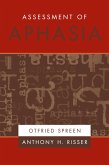Written by a multidisciplinary team of experts in neurobehavior, this concise, well-illustrated book provides normative data on clock drawing from ages 20 to 90 years. A practical guide to the quantitative assessment of clock drawing, it also takes a process-oriented approach to qualitative impairment. The authors discuss clock drawing as a neuropsychological test instrument and the rationale for selecting specific time settings, as well as the basis for using different clock conditions. The book contains numerous examples of clocks drawn by patients with cognitive impairment due to dementia, metabolic encephalopathy, traumatic brain injury, disconnection syndrome and focal brain lesions. Insight into changes in clock drawing ability that may represent the earliest markers of cognitive decline in dementia are also presented. This volume will be of interest to clinicians and researchers in neuropsychology, neurology, psychiatry, geriatric medicine, language therapy, and occupational therapy.
Dieser Download kann aus rechtlichen Gründen nur mit Rechnungsadresse in A, B, BG, CY, CZ, D, DK, EW, E, FIN, F, GR, HR, H, IRL, I, LT, L, LR, M, NL, PL, P, R, S, SLO, SK ausgeliefert werden.









